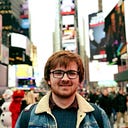Hanoi: Vietnam, Part 2 🇻🇳
It felt just that slight bit cooler for our second full day in Hanoi. Making the most of this, we walked to the Vietnamese museum of fine art. 20 minutes away from the old quarter, it has three floors dedicated to almost 2000 years of Vietnamese history.
Ranging from the dynasties which ruled the nation in the early centuries right up until the post war rebuilding of the nation in the 1980/90s, the artwork and artefacts give a real sense of the often turbulent times which Vietnam and its people have gone through. The country has been through many years of conflict, but the artwork is a rich tapestry of this history and how they have rebuilt on each occasion.
It took around 2 hours to view the whole gallery, I dare say we made the most of the air conditioning before heading back out into the uncomfortable mid day heat.
Fortunately the next stop was just across the street. The temple of literature, Hanoi’s first university, is a quaint space surround by some typically busy roads. It was built in 1070 as a university for the elites and aristocrats of Vietnam, it later went on to see many doctors graduate from its buildings.
These structures were erected during dynasties of hundreds of years ago and they survived many wars including two with western powers. An added touch for graduates is being able to have their names carved into huge stone tablets positioned in the courtyard for all visitors to see.
15 minutes walk across the city was the remains of a prison first constructed by the french in 1896. Ho Loan prison was initially used by the french colonists to imprison communist prisoners of North Vietnam in the early to mid 1950s.
Entry into the remains of the prison, just 1/5th of the complex has been left standing, is 30,000 VND. Inside, you can have a look at what the prison looked like for those held there for their political ideals. Cramped, hot and smelly with little food or water were the conditions which awaited the communist captives.
The prison has a somewhat acrid sense to it. There is little light which gets into it, and at the section which was for those prisoners facing execution is one of the two guillotines used by the French on the Vietnamese prisoners. It’s a truly raw look into a troubled period in Vietnam’s history.
Later in its life, the prison held a number of United States pilots who were shot down in or around Hanoi during the war. They were held in much better conditions than the Vietnamese were, and often for less time depending on how long into the war they arrived. One pilot held captive at the ‘Hanoi Hilton’ as it was dubbed by the pilots was future congressman and presidential candidate John McCain. He was shot down over Hanoi in October 1967 and spent the rest of the war in the prison.
The theme of the prison very much seems promoting and reflecting on the fighting spirit of the communist regime and Vietnamese people to oppress both the french and the Americans on separate occasions. It gives testament to those who died for their cause and is unsurprisingly negative towards the western nations which colonised or attacked Hanoi.
The prison was highly interesting and it is a place which highlights how different regimes treated their political prisoners. It showed the lows of how humans can treat each other and displays to visitors the power of the communist cause in 20th century Vietnam
